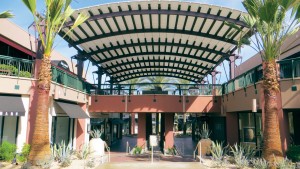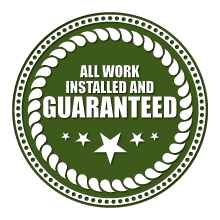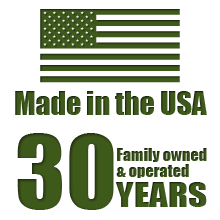Sharing an article via Steve Fredrickson at Fabric Architecture magazine: http://fabricarchitecturemag.com/2016/06/28/fabric-architecture-supports-an-industry/
“Fabric architecture creates a partnership with the architectural community and fabric manufacturers to develop what’s next for specific fabric projects and applications”.
“The breadth of options in today’s architectural membranes is increasing every year. While cotton and polyester woven products were the norm for the last century, architectural fabrics now offer technical properties never before seen”.
“The first architectural uses of fabrics can be traced all the way back to nomadic times. Through the use of animal skins, man first made portable shelters. These shelters provided protection against the rain and sun—not unlike today’s fabric architecture projects”.
Perfect partnership
“As demand has driven innovation in most industries, fabric architecture has seen more of a partnership with the architectural community and fabric manufacturers to develop what’s next for specific projects and applications”.
“In the past few years alone, the industry has seen the creation of molecular chains on fabric surface treatments (to provide higher performance value), clear films that span stadium roofs, acrylic fibers woven differently to create mesh (to promote shade and airflow), and mesh panels that wrap entire facilities”.
“So why has the partnership between architects and manufacturers worked so well? There are many reasons and ways to answer this question. One reason is due to the flexibility of fabric manufacturers versus the steel and wood industries. With the ability to change formulations, weaves, coatings and other aspects, fabric lends itself to innovation. Additional reasons for this partnership’s success include fabric’s strength-to-weight ratio, and breadth of range and offerings”.
“One obstacle in the past was the limited numbers of projects and applications from which manufacturers could point to for real-world results. Over the past three decades, however, manufacturers have maintained contact with projects and their applications. Government-required testing, in some locations, was necessary because “fabric building” was just too new to properly evaluate long term. Results gained from these studies have been published by a wide range of manufacturers and promoted via marketing departments around the world. As with any industry, innovation has led to more people watching the results. New, successful developments were copied for the same reasons they were initially installed”.
Applications abound
“In his book “The World is Flat, ” Thomas L. Friedman makes the point that through the growth of the Internet people around the world have become closer. Fabric architecture has been in use in Europe and Asia for many decades, but only in the last decade has its use worldwide really accelerated. Part of the reason is that we are now more aware than we ever were of what is going on around the world, and in real time. Projects that would have been only featured in a book are now found in mass emails, posted in a tweet, highlighted on television and seen on an architectural website”.
“Anyone can see that fabric is strong and getting stronger every day. The weight of the material is actually remaining the same (in ounces) and, in some cases, decreasing. This allows for enormous spans, comparatively speaking, that wood or steel can’t match due to the weight of the material and the size of the structure required to support it. Whether it’s a stadium roof, an amphitheater, façade, or an airplane hangar, fabric is spanning greater distances, and is lightweight while remaining structurally strong”.
Fabric forms
“There are today a number of different fabric options on the market. Some of the most common are woven acrylic, HDPE, laminated PVC, coated PVC, ePTFE, PTFE and ETFE. There are more architectural fabric types, but currently these are the most commonly used in architectural applications and to not include some is not to be viewed as a slight against those products or the full range. There are waterproof and mesh options in almost all of these ranges to further increase the options available, which only multiply once you factor in color options”.
“Woven acrylic has been a staple in the awning and marine industries for the last 50-plus years. Recent innovations by manufacturers have led to the development of mesh acrylics as well. Common applications for this type of product include awnings, tents and small shade structures. A wide range of color options and a traditional look highlight some of the popular reasons why this range is used”.
“HDPE is a woven tape fabric that has very good elastic properties. Its development for architectural use primarily came from South Africa and Australia where small tensile shade structures were required for carports and playgrounds. Today it is one of the most commonly used products to provide shade at car dealerships and playgrounds”.
“Laminated PVC is a series of PVC films that are attached to a base woven product. It was created as a replacement of canvas for tents. Present-day applications for this product include awnings and other frame-supported structures. A wide range of colors along with top coatings for dirt resistance have added value to this economical product”.
“Coated PVC is different from laminated PVC by the actual coating process: liquid coatings at one with the base fabric versus films. These products have possibly the widest range of acceptance currently in the market due to their ability to be used in almost any architectural application. Solid and mesh options are readily available with many options for dirt resistance, and a large range of colors makes this product a common one”.
“ePTFE is an interesting product in that it has very high levels of light transmission and is commonly used in retractable applications (it has the ability to be flexed multiple times without cracking the surface) and in fixed applications. Its high level of dirt resistance and natural light make it very popular with architects. It is one of the newest products in the industry”.
“PTFE-coated glass fiber has been a staple for large tensile roof applications, like the Denver Airport, for many years. Its high level of dirt resistance and noncombustible base cloth have been well received by the architectural community”.
“ETFE is perhaps the newest product on the market. Initially required to be a part of an air-inflated pillow system, its clear properties have allowed for the growth of grass under enclosed roofs. It can be argued that this product is currently the most trending in the world of architecture of any of the above fabric types”.
Critical choices
“With all of these choices, how do you choose which fabric makes the best option for a project? This is a question asked all of the time and it’s a hard one for those in the industry to answer fairly. Everyone works for someone so that alone can be an issue, but honestly we have to ask the critical question: who benefits?”
“Not every product should be used in every application. The architect or designer must do the due diligence; builders, manufacturers and installers all have their preferred options and relationships. An architect or owner must ask questions and rely on hard data to make choices”.
“What product has the history, track record and qualities desired the most? Does it truly fit the budget? What is the green policy and what is the proof of it actually being green?”
“There is a wide range of fabric options, and there are many uses available, and tomorrow someone is going to call to ask the question: “Can you do this?” Here’s hoping they do because in the end that is what drives innovation in this industry, for without the architects and designers pushing for what’s next…there wouldn’t be a next”.




